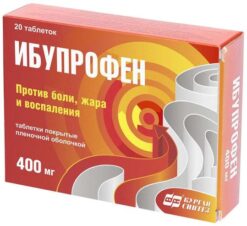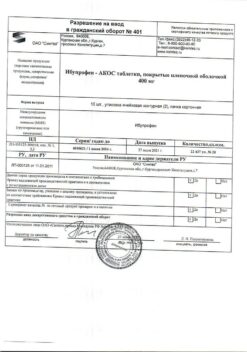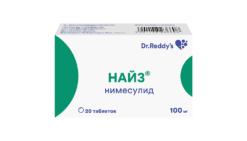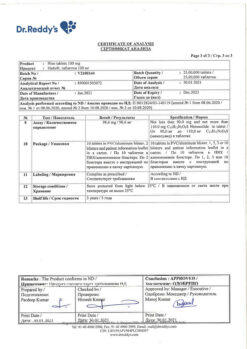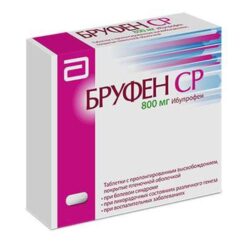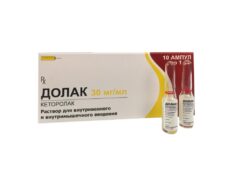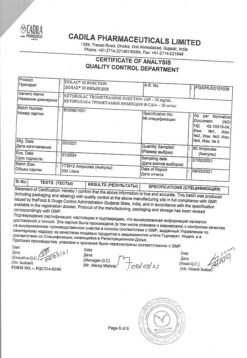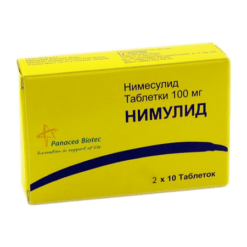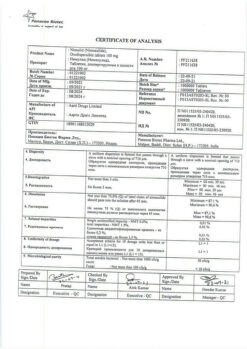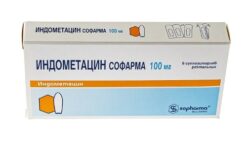No products in the cart.
Solpadein Fast, 65 mg+500 mg 24 pcs
€1.00
Out of stock
(E-mail when Stock is available)
Description
The drug has analgesic and antipyretic effect. “Solpadein Fast” contains a combination of two active ingredients: paracetamol and caffeine.
Paracetamol blocks cyclooxygenase (COX) in the central nervous system (CNS), affecting the centers of pain and thermoregulation (in inflamed tissues cellular peroxidases neutralize the effect of paracetamol on COX), which explains the almost complete absence of anti-inflammatory effect.
The lack of effect on the synthesis of Pg in peripheral tissues explains its lack of negative effects on water-salt metabolism (sodium and water retention) and gastrointestinal mucosa.
Caffeine stimulates psychomotor centers of the brain, has an analeptic effect, enhances the effect of analgesics, eliminates sleepiness and fatigue, increases physical and mental performance.
Paracetamol is quickly and almost completely absorbed from the gastrointestinal tract, its distribution in body fluids is relatively uniform. Binding of paracetamol with plasma proteins is minimal at therapeutic concentrations.
Paracetamol is metabolized in the liver and excreted in the urine as glucuronide and sulfate metabolites – less than 5% is excreted as unchanged paracetamol.
The elimination half-life when taking therapeutic dose is 2-3 hours. Caffeine is quickly absorbed from the gastrointestinal tract and distributed throughout the body.
Caffeine is almost completely metabolized in the liver by oxidation and demethylation in the form of metabolites that are excreted in the urine. The elimination half-life is 4-9 hours.
Indications
Indications
“Solpadein Fast” is used to relieve headache, migraine, toothache, low back pain, neuralgia, muscle and rheumatic pain, painful menstruation, sore throat.
“Solpadein Fast” is also used for symptomatic treatment of colds and flu, reducing elevated body temperature.
Active ingredient
Active ingredient
Composition
Composition
Filmed film-coated tablets.
The active ingredients:
Paracetamol 500 mg,
Caffeine 65 mg.
Excipients:
Pregelatinized starch 50 mg,
corn starch 41.4 mg,
povidone 2 mg,
potassium sorbate 0.6 mg,
Talc 15 mg,
stearic acid 5 mg,
Croscarmellose sodium 10 mg,
hypromellose 5 mg,
triacetin 1 mg.
How to take, the dosage
How to take, the dosage
Adults (including the elderly) and children over 12 years of age: usually 1-2 tablets 3-4 times a day, if necessary. The interval between doses is at least 4 hours. Maximum single dose is 2 tablets; maximum daily dose is 8 tablets.
The drug is not recommended to use more than 5 days as an analgesic and more than 3 days as antipyretic without physician’s prescription and supervision.
The daily dose of the drug or the duration of treatment may only be increased under the supervision of a physician.
Do not exceed the stated dose. If you overdose, see your doctor immediately, even if you feel well.
Interaction
Interaction
Long-term regular use of the drug increases the effect of indirect anticoagulants (warfarin and other coumarins), which increases the risk of bleeding.
Episodic administration of a single dose of the drug has no significant effect on the effect of indirect anticoagulants.
It potentiates the effect of MAO inhibitors. Barbiturates, carbamazepine, phenytoin, primidone, ethanol, rifampicin, phenylbutazone, preparations of Hypericum, tricyclic antidepressants and other inducers of microsomal oxidation increase production of hydroxylated active metabolites and cause possible severe liver damage in small overdoses of paracetamol (5 g or more).
Hepatic microsomal enzyme inhibitors (cimetidine) reduce the risk of hepatotoxic effects. Under the influence of paracetamol, the elimination time of chloramphenicol increases by 5 times. Caffeine accelerates the absorption of ergotamine.
The simultaneous use of paracetamol and alcoholic beverages increases the risk of liver damage and acute pancreatitis. Metoclopramide and domperidone increase, and colestyramine decreases the rate of absorption of paracetamol. The drug may decrease the efficacy of uricosuric drugs.
Special Instructions
Special Instructions
If while taking the drug no improvement of the condition is observed or the headache becomes constant, it is necessary to consult a doctor.
While taking the drug, excessive consumption of caffeine-containing food products (tea, coffee, etc.) is not recommended because it may lead to anxiety, restlessness, irritability, insomnia, headache, gastrointestinal disorders, tachycardia, cardiac arrhythmia.
Deficiency of glutathione due to eating disorders, cystic fibrosis, HIV infection, starvation, exhaustion causes the possibility of severe liver damage in small overdoses of paracetamol (5 g or more).
The drug should not be taken simultaneously with other paracetamol-containing drugs. TO AVOID TOXIC LIVER DAMAGE, PARACETAMOL SHOULD NOT BE COMBINED WITH ALCOHOLIC BEVERAGES AND SHOULD NOT BE TAKEN BY PERSONS INCLINED TO CHRONIC ALCOHOL CONSUMPTION. Patients with atopic bronchial asthma and pollinosis have an increased risk of allergic reactions.
In patients with renal and hepatic insufficiency the drug should be used with caution and only after consultation with the physician. When taking the drug in patients with non-alcoholic cirrhosis there is a high risk of overdose.
When uric acid and blood glucose tests are performed, the doctor should be informed about taking the drug. May change the results of doping control tests on athletes.
Contraindications
Contraindications
– Hypersensitivity to the components of the drug;
– Severe hepatic or renal impairment;
– Arterial hypertension;
– Glaucoma;
– Sleep disturbances;
– Children under 12 years of age;
– Epilepsy.
Side effects
Side effects
The drug is usually well tolerated in the recommended doses. The following side effects were detected spontaneously during post-registration use of the drug.
The side effects are classified by organ system and frequency. The frequency of side effects is defined as follows: very frequently (greater than or equal to 1/10), frequently (greater than or equal to 1/100 and less than 1/10), infrequently (greater than or equal to 1/1000 and less than 1/100), rarely (greater than or equal to 1/10 000 and less than 1/1000) and very rarely (greater than or equal to 1/100 000 and less than 1/10 000).
Allergic reactions: Very rare – in the form of skin rashes, angioedema (Quincke’s edema), Stevens-Johnson syndrome, anaphylaxis;
Hematopoietic system disorders: Very rare – leukopenia, thrombocytopenia, methemoglobinemia, agranulocytosis, hemolytic anemia;
Respiratory system disorders: Very rare – bronchospasm (in patients with hypersensitivity to acetylsalicylic acid and other non-steroidal anti-inflammatory drugs);
Hepatobiliary system disorders: Very rare – liver function disorder.
In prolonged use in high doses the probability of hepatotoxic effect, nephrotoxic effect and pancytopenia increases. Also, in cases of prolonged use at high doses, monitoring of blood counts is necessary.
There may be reactions in the form of dyspeptic disorders (including nausea, epigastric pain), increased excitability, dizziness, sleep disturbances, tachycardia.
In case of excessive use of caffeine-containing food products (tea, coffee, etc.) while taking the drug, anxiety, irritability, insomnia, headache, gastrointestinal disorders, tachycardia, cardiac arrhythmia may occur. If any of the above side effects occur, stop taking the drug and see your doctor immediately.
Overdose
Overdose
Symptoms (caused by paracetamol): during the first 24 hours after overdose – nausea, vomiting, stomach pain, pale skin, anorexia.
1-2 days later signs of liver damage are determined (pain in the liver area, increased activity of “liver” enzymes). Development of carbohydrate metabolism disorders and metabolic acidosis is possible.
In adult patients liver damage develops after ingestion of more than 10 g of paracetamol. In the presence of factors influencing the liver toxicity of paracetamol (see section “Interaction with other medicinal products”, “Cautions”) liver damage is possible after taking 5 grams or more of paracetamol.
In severe cases of overdose as a result of liver failure may develop encephalopathy (impaired brain function), bleeding, hypoglycemia, brain edema, up to death.
The development of acute renal failure with acute tubular necrosis is possible, characterized by pain in the lumbar region, hematuria (blood or red blood cells in the urine), proteinuria (increased protein content in the urine), while severe liver damage may be absent.
There have been cases of cardiac arrhythmias and pancreatitis. Treatment: If overdose is suspected, even if the first symptoms are not expressed, the drug should be discontinued and medical attention should be sought immediately. Within 1 hour after overdose it is recommended to wash the stomach and take enterosorbents (activated charcoal, polyphepan). Plasma level of paracetamol should be determined, but not earlier than 4 hours after overdose (earlier results are unreliable).
The administration of acetylcysteine within 24 hours after overdose. Maximum protective effect is provided during the first 8 hours after overdose; as time passes, the effectiveness of the antidote decreases dramatically.
If necessary, acetylcysteine is administered intravenously. In the absence of vomiting before the patient is admitted to the hospital, methionine may be used.
The need for additional therapeutic measures (further administration of methionine, intravenous administration of acetylcysteine) is determined depending on the concentration of paracetamol in the blood, as well as on the time since its administration.
The treatment of patients with severe liver dysfunction 24 hours after taking paracetamol should be done in conjunction with specialists from a toxicology center or a specialized department of liver disease.
Symptoms (caused by caffeine): epigastric pain, vomiting, frequent urination, tachycardia, arrhythmia, CNS stimulation (insomnia, restlessness, agitation, anxiety, increased neuroreflex excitability, tremors and seizures).
We should keep in mind, however, that the occurrence of clinically significant symptoms of caffeine overdose while taking this medication is always associated with severe liver damage from paracetamol overdose.
Treatment: there is no specific antidote.
Treatment includes supportive measures such as plenty of fluids and maintenance of vital signs. Within 1 hour to 4 hours after an overdose, administration of activated charcoal is recommended.
In order to reduce the effects of caffeine overdose on central nervous system function, intravenous sedation is recommended.
Similarities
Similarities
Additional information
| Shelf life | 4 years. |
|---|---|
| Conditions of storage | Keep out of the reach of children at a temperature not exceeding 25 ° C. |
| Manufacturer | GlaxoSmithKlein Dungarvan Limited, Ireland |
| Medication form | pills |
| Brand | GlaxoSmithKlein Dungarvan Limited |
Related products
Buy Solpadein Fast, 65 mg+500 mg 24 pcs with delivery to USA, UK, Europe and over 120 other countries.


